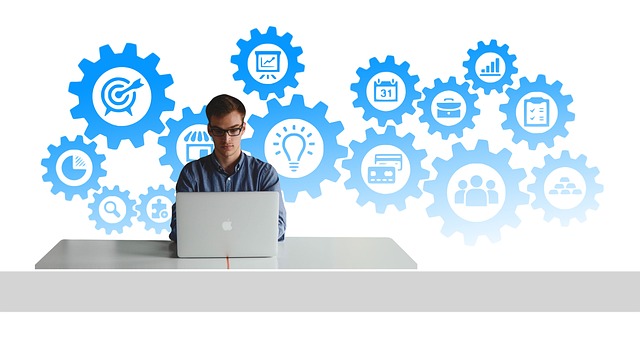Table of Contents
Key Components of a Sustainable Smart Home Energy System
Building a sustainable smart home energy system requires a thoughtful approach that combines various essential components. One key element is solar panels, which harness the power of the sun to provide clean and renewable energy for your home. By installing solar panels on your roof or property, you can significantly reduce your reliance on traditional energy sources and lower your carbon footprint.
Another vital component of a sustainable smart home energy system is energy storage. This technology allows you to store excess energy generated by solar panels or other renewable sources for later use, providing you with a reliable and uninterrupted power supply. By integrating energy storage solutions into your home, you can increase energy efficiency and reduce your overall electricity costs.
How Solar Panels Can Revolutionize Your Energy Usage
Let’s talk about solar panels – those shiny, futuristic-looking contraptions that can make a world of difference in how you use energy at home. Imagine soaking up the sun’s rays to power up your TV, your fridge, and even your gaming console. It’s like having your own personal power plant right on your rooftop, minus the noise and the pollution. With solar panels, you can kiss goodbye to those hefty electricity bills that always seem to sneak up on you when you least expect it.
And here’s the best part – solar panels aren’t just for the eco-conscious folks out there. Nope, they’re for anyone who wants to save some serious cash in the long run. Think about it; once you’ve got those panels soaking up the sun’s goodness, you’re basically harnessing free energy. That means more money in your pocket for the things you actually care about, whether it’s treating yourself to a fancy dinner or splurging on a weekend getaway. So, why not let the sun do all the hard work for you?
Innovative Ways to Monitor and Control Energy Consumption
Maximizing energy efficiency is all about staying in the loop with how you’re using power around the house. Gone are the days when you had to play the guessing game with your energy consumption. Modern technology has brought about some nifty gadgets that help you keep tabs on your energy usage without breaking a sweat. Imagine having a user-friendly app that gives you real-time insights into how much electricity your appliances are gobbling up. It’s like having a personal energy detective right in your pocket! Plus, these apps often come with customizable settings that allow you to set energy-saving goals tailored to your home’s unique needs. It’s like having a personal coach cheering you on to a more sustainable lifestyle.
But wait, there’s more! Smart plugs are another game-changing tool in the world of energy monitoring and control. These handy devices let you remotely control your appliances from your smartphone, giving you the power to turn them on and off with just a tap of your finger. Forgot to unplug the coffee maker before heading out? No problem! With smart plugs, you can easily switch off any device from wherever you are. And the best part? Some smart plugs even come equipped with energy monitoring features, so you can track the energy consumption of individual devices and make informed decisions on how to cut back. It’s like having a magic wand that puts you in charge of your home’s energy destiny.
The Role of Energy Storage in Creating a Sustainable Home
Energy storage plays a crucial role in creating a sustainable home by offering a way to store excess energy generated from renewable sources like solar panels. Imagine soaking up all that glorious sunshine during the day but still being able to power your home when the sun goes down – that’s the magic of energy storage. Not only does it provide a reliable source of power during times when renewable energy may not be readily available, but it also helps reduce reliance on traditional fossil fuels, ultimately lowering your carbon footprint.
By harnessing energy storage technologies like batteries, homeowners can take charge of their energy usage, saving money in the long run while treading lightly on the environment. Picture this: you generate more electricity than you need during sunny hours, store it away for a rainy day (quite literally), and then tap into that reserve when the clouds roll in. It’s like having your own little energy bank at home, ensuring a steady and sustainable energy supply for your household needs.
Why Smart Thermostats are a Game-Changer for Energy Efficiency
Smart thermostats are like the ultimate wingmen for your home’s heating and cooling system. They swoop in with unmatched precision to make sure your space is always just the right temperature. Picture this: you’re chillin’ on the couch during a scorching summer day, and suddenly, your smart thermostat adjusts the AC to cool things down without you even having to lift a finger. It’s like having your own personal climate concierge, always working behind the scenes to keep you comfortable and your energy usage on point.
But here’s where the game-changing magic really happens – these bad boys don’t just react to your current comfort needs, they anticipate them. Smart thermostats learn your habits, preferences, and daily routine faster than you can say “efficiency.” They analyze data, adapt to your lifestyle, and optimize heating and cooling schedules to shave off unnecessary energy consumption. Plus, with the power of remote access through your phone or voice commands, you can tweak settings on the fly, ensuring your energy usage is always in the sweet spot. It’s like having a smart, energy-saving sidekick that’s always got your back.
Maximizing Energy Efficiency Through Smart Lighting Solutions
Illuminating your home with smart lighting solutions can make a significant impact on your energy efficiency. By utilizing LED bulbs and smart switches, you can easily control when and where your lights are on, reducing unnecessary energy consumption. For example, setting up motion sensors in less frequently occupied areas like hallways or closets ensures that lights are only on when needed, saving energy without you even thinking about it.
Moreover, smart lighting systems allow you to customize and schedule your lighting preferences, creating a more comfortable and energy-efficient environment. With the ability to adjust brightness levels and colors to match your mood or time of day, you can enhance your living experience while also minimizing energy waste. Imagine effortlessly dimming the lights for a cozy movie night or setting timers to ensure lights are off when you’re not at home. Smart lighting solutions offer both convenience and energy savings to help you create a sustainable and efficient living space.
The Benefits of Investing in Energy-Efficient Appliances
If you’re looking to upgrade your home appliances, consider investing in energy-efficient options. Not only will you be reducing your carbon footprint, but you’ll also save money on your utility bills in the long run. Energy-efficient appliances, like refrigerators, washing machines, and dishwashers, are designed to consume less electricity without compromising performance. This means you can enjoy the convenience of modern appliances while being kinder to the environment and your wallet.
When you switch to energy-efficient appliances, you’re not just making a personal investment; you’re contributing to a more sustainable future for our planet. By using less energy, these appliances help reduce overall greenhouse gas emissions and lessen the strain on our natural resources. Additionally, many energy-efficient appliances are built to last longer, meaning you won’t have to replace them as frequently, further reducing waste and saving you money in the long term. So, next time you’re in the market for a new appliance, think about the bigger picture and opt for energy-efficient models that benefit both you and the environment.
Integrating Renewable Energy Sources into Your Home
When setting out to make your home more sustainable, one great way to decrease reliance on traditional energy sources is by incorporating renewable energy systems. Solar panels are a popular choice for many homeowners looking to tap into clean energy. By capturing sunlight and converting it into electricity, solar panels can substantially reduce your carbon footprint while also cutting down on your energy bills. Imagine harnessing the power of the sun to run your home appliances and charge your electric vehicle – it’s like having your own personal energy source right on your rooftop.
Another renewable energy source gaining traction is wind power. Installing a small wind turbine on your property can generate electricity by harnessing the power of the wind. While wind turbines are not as common in residential areas as solar panels, they can be a viable option for homeowners in windy regions looking to further diversify their renewable energy sources. Picture the image of graceful wind turbines silently spinning in the breeze, effortlessly generating clean, green energy for your home.
How Smart Home Automation Can Optimize Energy Usage
Smart home automation is like having a magical assistant that works tirelessly behind the scenes to make your living space more efficient. With just a few taps on your smartphone or even a simple voice command, you can control your lights, thermostat, and appliances to ensure they’re only running when needed. Imagine never having to worry about whether you left the lights on or the air conditioner blasting while you’re away – smart home automation takes care of it all. Not only does this make your life easier and more convenient, but it also helps you cut down on unnecessary energy consumption, ultimately saving you money on your utility bills.
By integrating smart home automation into your daily routine, you can create custom schedules for your devices to operate based on your preferences and lifestyle. For example, you can set your lights to dim in the evening for a cozy atmosphere or program your thermostat to adjust the temperature when you’re asleep or away from home. These personalized settings not only improve your comfort but also contribute to significant energy savings over time. With smart home automation, optimizing your energy usage becomes effortless and seamless, allowing you to enjoy a more sustainable and cost-effective living environment.
The Importance of Insulation and Weatherization in Energy Conservation
One key aspect often overlooked when it comes to saving energy in our homes is proper insulation and weatherization. By ensuring that our homes are well-insulated and sealed against drafts, we can significantly reduce the amount of energy needed to heat or cool our living spaces. Insulation helps to trap heat inside during the colder months and keep it out during the warmer months, making it easier for our HVAC systems to maintain a comfortable temperature without working overtime. Weatherization, on the other hand, involves sealing up any leaks or cracks that could let air in or out, helping to maintain a consistent indoor climate.It’s surprising how much energy can be wasted due to poor insulation and weatherization.
Without these measures in place, our heating and cooling systems have to work harder to compensate for the constant loss of heat or cool air. This not only leads to higher energy bills but also puts unnecessary strain on the environment by increasing our carbon footprint. Investing in proper insulation and weatherization for our homes is not only beneficial for our wallets but also for the planet, as it allows us to reduce our energy consumption and live more sustainably.
Creating a Sustainable Energy Plan for Your Home
Every household deserves to have a sustainable energy plan in place. It’s not just about saving money, but also about doing our part for the environment. Start by assessing your current energy usage. Take note of where most of your energy is being consumed – is it heating, cooling, lighting, or appliances? This will help you identify areas where you can make significant changes to reduce your energy consumption.
Next, consider implementing energy-efficient upgrades. This could be as simple as switching to LED light bulbs or investing in Energy Star-rated appliances. Small changes like these can add up to significant energy savings over time. Don’t forget to seal up any drafts in your home and ensure your insulation is up to par. By taking these steps, you can create a sustainable energy plan that not only benefits your wallet but also the planet.
Understanding the Financial Benefits of Sustainable Energy Solutions
For many homeowners, the idea of investing in sustainable energy solutions may initially seem like a costly endeavor. However, it is essential to recognize that the financial benefits of implementing these solutions can outweigh the initial expenses in the long run. By reducing energy waste and optimizing energy usage through smart technologies and renewable sources, homeowners can significantly lower their utility bills over time. Not only does this lead to cost savings, but it also contributes to a more sustainable and eco-friendly lifestyle. So, it’s not just about spending money upfront, but rather making a smart investment for a greener future.
Another significant advantage of sustainable energy solutions is the potential increase in the overall value of your home. With a growing emphasis on environmental conservation and energy efficiency, properties equipped with sustainable features tend to appeal to a broader range of buyers in the real estate market. This can lead to a higher resale value and a quicker sale when the time comes to put your house on the market. Additionally, some government incentives and rebates are available for homeowners who adopt sustainable energy practices, offering further financial benefits. So, by making your home more energy-efficient and environmentally friendly, you are not only improving your quality of life but also potentially boosting the financial worth of your property.
Tips for Reducing Energy Waste in Your Home
Trying turning off lights when you leave a room. This simple switch can help save energy and lower your electric bill, reducing your carbon footprint. Also, consider unplugging devices when you’re not using them. Many electronics still consume energy even when turned off if they’re plugged in. These small changes can add up to significant energy savings over time, benefiting both your wallet and the environment.
How to Incorporate Energy-Efficient Water Heating Systems
Efficient water heating systems are a game-changer when it comes to lowering your energy bills and reducing your carbon footprint. One easy way to incorporate energy-efficient water heating systems into your home is by installing a tankless water heater. These units heat water on demand, eliminating the need to constantly keep a large tank of water hot. Not only does this save energy, but it also ensures you never run out of hot water during a shower.
Another way to upgrade your water heating system is by adding a solar water heater to your home. By harnessing the power of the sun to heat your water, you can significantly reduce your energy consumption. Plus, many utility companies offer incentives for installing solar water heaters, making it a cost-effective and eco-friendly choice for your home. Whether you opt for a tankless water heater or a solar water heater, incorporating energy-efficient water heating systems into your home is a smart investment that will benefit both your wallet and the environment.
The Future of Sustainable Smart Home Energy Solutions
In the world of sustainable smart home energy solutions, the future is bright and full of possibilities. With advancements in technology and a growing focus on environmental consciousness, homeowners can look forward to even more innovative ways to optimize energy usage in their homes. From enhanced solar panel capabilities to smarter thermostats and lighting systems, the future holds a wealth of opportunities for creating more energy-efficient living spaces.
As we move towards a more sustainable future, integrating renewable energy sources into our homes will become increasingly common. Imagine a home powered by a combination of solar panels, wind turbines, and geothermal systems, all working together seamlessly to provide clean and renewable energy. With the rise of smart home automation, homeowners will have the ability to monitor and control their energy consumption like never before, making it easier to reduce waste and save money in the long run.


